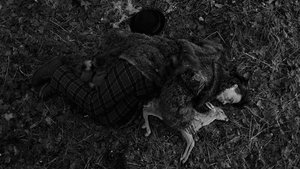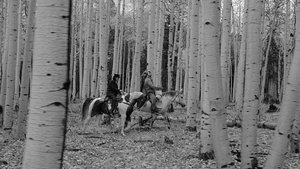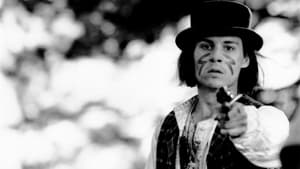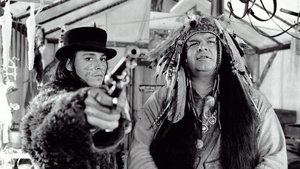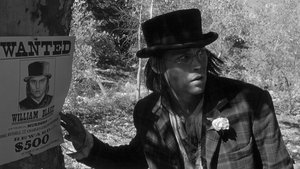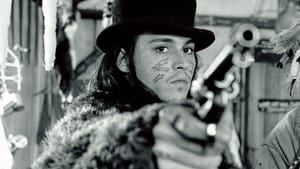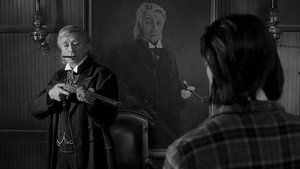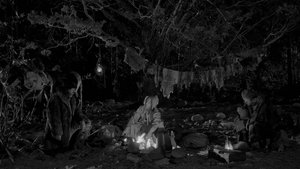Video Sources 0 Views
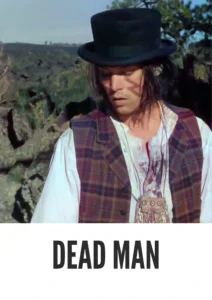
Synopsis

Embark on a transformative and ethereal odyssey with Jim Jarmusch’s Dead Man, a neo-Western masterpiece from 1995, now beautifully colorized to enhance its dreamlike quality and haunting beauty. Starring Johnny Depp and Gary Farmer, this film blends stark realism with profound symbolism as it explores themes of identity, spirituality, and the clash between civilization and nature. Perfect for cinephiles seeking thought-provoking narratives and visually striking experiences, this HD download offers a unique perspective on a modern classic.
Dead Man follows William Blake (Johnny Depp), a naive accountant from Cleveland, Ohio, who travels west to the town of Machine for a promised job. Upon arrival, he discovers the position has been filled and is driven away by the ruthless owner, John Dickinson.
Jobless and penniless, Blake encounters Thel Russell, a paper flower vendor, and finds himself in a tragic confrontation with her ex-boyfriend. Wounded and on the run, Blake crosses paths with Nobody (Gary Farmer), a Native American man who believes Blake is the reincarnation of the poet William Blake. Nobody decides to guide Blake on a journey to the spirit world, viewing him as a “dead man” walking.
As they travel westward, Blake and Nobody leave a trail of bodies behind them, encountering a series of eccentric and dangerous characters. Wanted posters with growing bounties mark Blake’s path, and he is pursued by ruthless bounty hunters hired by Dickinson.
Along the way, Blake undergoes a vision quest, confronts his own mortality, and becomes increasingly attuned to the natural world. Nobody prepares Blake for his final journey, leading him to a Makah village where a funeral canoe awaits him. In a state of delirium, Blake drifts out to sea, finally succumbing to his wounds as he embarks on his spiritual voyage.
The film features a remarkable cast, each delivering captivating performances:
-
Johnny Depp as William Blake
-
Gary Farmer as Nobody
-
Crispin Glover as Train Fireman
-
Lance Henriksen as Cole Wilson
-
Michael Wincott as Conway Twill
-
Eugene Byrd as Johnny “The Kid” Pickett
-
John Hurt as John Dickinson
-
Robert Mitchum as John Dickinson
-
Iggy Pop as Saloon Customer
Dead Man transcends traditional genre classifications, blending elements of the Western, road movie, and philosophical drama. It is often described as a neo-Western due to its unconventional approach to the genre, its exploration of complex themes, and its unique visual style.
Released in 1995, Dead Man emerged during a period of re-evaluation within the Western genre. Filmmakers began to challenge traditional narratives, exploring darker themes and presenting more nuanced portrayals of Native American culture. Dead Man stands as a significant example of this trend, offering a poetic and unconventional perspective on the American West.
This colorized version of Dead Man has been carefully reimagined using modern digital techniques, adding new layers of depth and emotion to the film’s visual landscape. The colorization process involved meticulous attention to detail, with consideration given to historical accuracy, character development, and the overall tone of the film. While the specific software used remains proprietary, the techniques employed included advanced algorithms for color palette selection, motion estimation, and image enhancement. This painstaking process brings new life to the characters and settings, making the story even more captivating for modern audiences. While the decision to colorize black and white films is often debated, it introduces these films to a broader audience, ensuring their lasting impact for generations to come.
-
: Jim Jarmusch
-
: Jim Jarmusch
-
: Robby Müller
-
: Jay Rabinowitz
-
: Pandora Filmproduktion, JVC Entertainment Networks
-
: Miramax Films
-
: 121 minutes
-
: MP4
-
: HD (1080p)
-
: Compatible with most devices, including smartphones, tablets, computers, and smart TVs.
Dead Man (1995) has garnered critical acclaim for its unique vision, its stunning black and white cinematography, and its thought-provoking themes. It is considered a landmark film in Jim Jarmusch’s career and a significant contribution to the neo-Western genre. While its unconventional narrative and deliberate pacing may not appeal to all viewers, Dead Man remains a powerful and unforgettable cinematic experience.
-
: What is Dead Man about?
-
A: Dead Man is a neo-Western film about an accountant who embarks on a spiritual journey after being wrongly accused of murder.
-
-
: Is Dead Man (1995) a well-known film?
-
A: Dead Man is a critically acclaimed film that has gained a cult following over the years.
-
-
: Is this version of Dead Man colorized?
-
A: Yes, this version has been professionally colorized to enhance the viewing experience.
-
-
: What makes Dead Man interesting for classic film fans?
-
A: Dead Man offers a unique and poetic perspective on the Western genre, challenging traditional narratives and exploring complex themes.
-
-
: What is the download format?
-
A: The download format is MP4, which is compatible with most devices.
-
-
: What resolution is the download?
-
A: The resolution is HD (1080p), providing a high-quality viewing experience.
-
Watch Dead Man Today!
